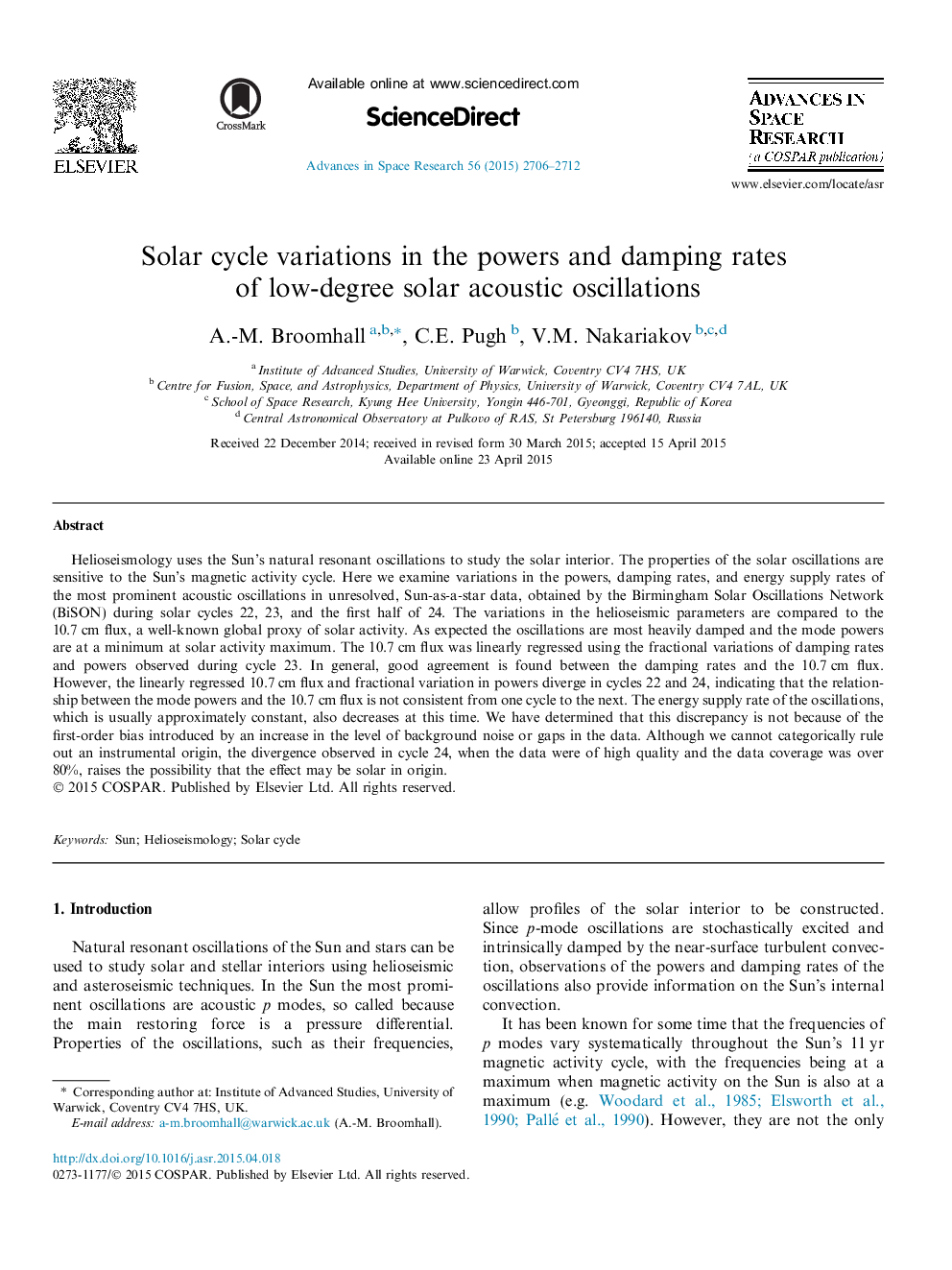| Article ID | Journal | Published Year | Pages | File Type |
|---|---|---|---|---|
| 1763506 | Advances in Space Research | 2015 | 7 Pages |
Helioseismology uses the Sun’s natural resonant oscillations to study the solar interior. The properties of the solar oscillations are sensitive to the Sun’s magnetic activity cycle. Here we examine variations in the powers, damping rates, and energy supply rates of the most prominent acoustic oscillations in unresolved, Sun-as-a-star data, obtained by the Birmingham Solar Oscillations Network (BiSON) during solar cycles 22, 23, and the first half of 24. The variations in the helioseismic parameters are compared to the 10.7 cm flux, a well-known global proxy of solar activity. As expected the oscillations are most heavily damped and the mode powers are at a minimum at solar activity maximum. The 10.7 cm flux was linearly regressed using the fractional variations of damping rates and powers observed during cycle 23. In general, good agreement is found between the damping rates and the 10.7 cm flux. However, the linearly regressed 10.7 cm flux and fractional variation in powers diverge in cycles 22 and 24, indicating that the relationship between the mode powers and the 10.7 cm flux is not consistent from one cycle to the next. The energy supply rate of the oscillations, which is usually approximately constant, also decreases at this time. We have determined that this discrepancy is not because of the first-order bias introduced by an increase in the level of background noise or gaps in the data. Although we cannot categorically rule out an instrumental origin, the divergence observed in cycle 24, when the data were of high quality and the data coverage was over 80%, raises the possibility that the effect may be solar in origin.
